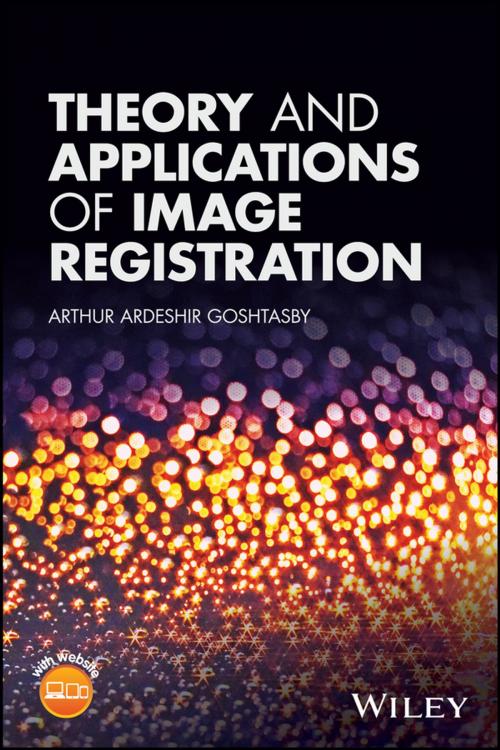Theory and Applications of Image Registration
Nonfiction, Computers, Advanced Computing, Engineering, Computer Vision| Author: | Arthur Ardeshir Goshtasby | ISBN: | 9781119171737 |
| Publisher: | Wiley | Publication: | July 3, 2017 |
| Imprint: | Wiley | Language: | English |
| Author: | Arthur Ardeshir Goshtasby |
| ISBN: | 9781119171737 |
| Publisher: | Wiley |
| Publication: | July 3, 2017 |
| Imprint: | Wiley |
| Language: | English |
A hands-on guide to image registration theory and methods—with examples of a wide range of real-world applications
Theory and Applications of Image Registration offers comprehensive coverage of feature-based image registration methods. It provides in-depth exploration of an array of fundamental issues, including image orientation detection, similarity measures, feature extraction methods, and elastic transformation functions. Also covered are robust parameter estimation, validation methods, multi-temporal and multi-modality image registration, methods for determining the orientation of an image, methods for identifying locally unique neighborhoods in an image, methods for detecting lines in an image, methods for finding corresponding points and corresponding lines in images, registration of video images to create panoramas, and much more.
Theory and Applications of Image Registration provides readers with a practical guide to the theory and underpinning principles. Throughout the book numerous real-world examples are given, illustrating how image registration can be applied to problems in various fields, including biomedicine, remote sensing, and computer vision. Also provided are software routines to help readers develop their image registration skills. Many of the algorithms described in the book have been implemented, and the software packages are made available to the readers of the book on a companion website. In addition, the book:
- Explores the fundamentals of image registration and provides a comprehensive look at its multi-disciplinary applications
- Reviews real-world applications of image registration in the fields of biomedical imaging, remote sensing, computer vision, and more
- Discusses methods in the registration of long videos in target tracking and 3-D reconstruction
- Addresses key research topics and explores potential solutions to a number of open problems in image registration
- Includes a companion website featuring fully implemented algorithms and image registration software for hands-on learning
Theory and Applications of Image Registration is a valuable resource for researchers and professionals working in industry and government agencies where image registration techniques are routinely employed. It is also an excellent supplementary text for graduate students in computer science, electrical engineering, software engineering, and medical physics.
A hands-on guide to image registration theory and methods—with examples of a wide range of real-world applications
Theory and Applications of Image Registration offers comprehensive coverage of feature-based image registration methods. It provides in-depth exploration of an array of fundamental issues, including image orientation detection, similarity measures, feature extraction methods, and elastic transformation functions. Also covered are robust parameter estimation, validation methods, multi-temporal and multi-modality image registration, methods for determining the orientation of an image, methods for identifying locally unique neighborhoods in an image, methods for detecting lines in an image, methods for finding corresponding points and corresponding lines in images, registration of video images to create panoramas, and much more.
Theory and Applications of Image Registration provides readers with a practical guide to the theory and underpinning principles. Throughout the book numerous real-world examples are given, illustrating how image registration can be applied to problems in various fields, including biomedicine, remote sensing, and computer vision. Also provided are software routines to help readers develop their image registration skills. Many of the algorithms described in the book have been implemented, and the software packages are made available to the readers of the book on a companion website. In addition, the book:
- Explores the fundamentals of image registration and provides a comprehensive look at its multi-disciplinary applications
- Reviews real-world applications of image registration in the fields of biomedical imaging, remote sensing, computer vision, and more
- Discusses methods in the registration of long videos in target tracking and 3-D reconstruction
- Addresses key research topics and explores potential solutions to a number of open problems in image registration
- Includes a companion website featuring fully implemented algorithms and image registration software for hands-on learning
Theory and Applications of Image Registration is a valuable resource for researchers and professionals working in industry and government agencies where image registration techniques are routinely employed. It is also an excellent supplementary text for graduate students in computer science, electrical engineering, software engineering, and medical physics.















